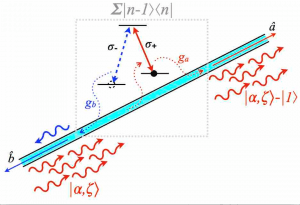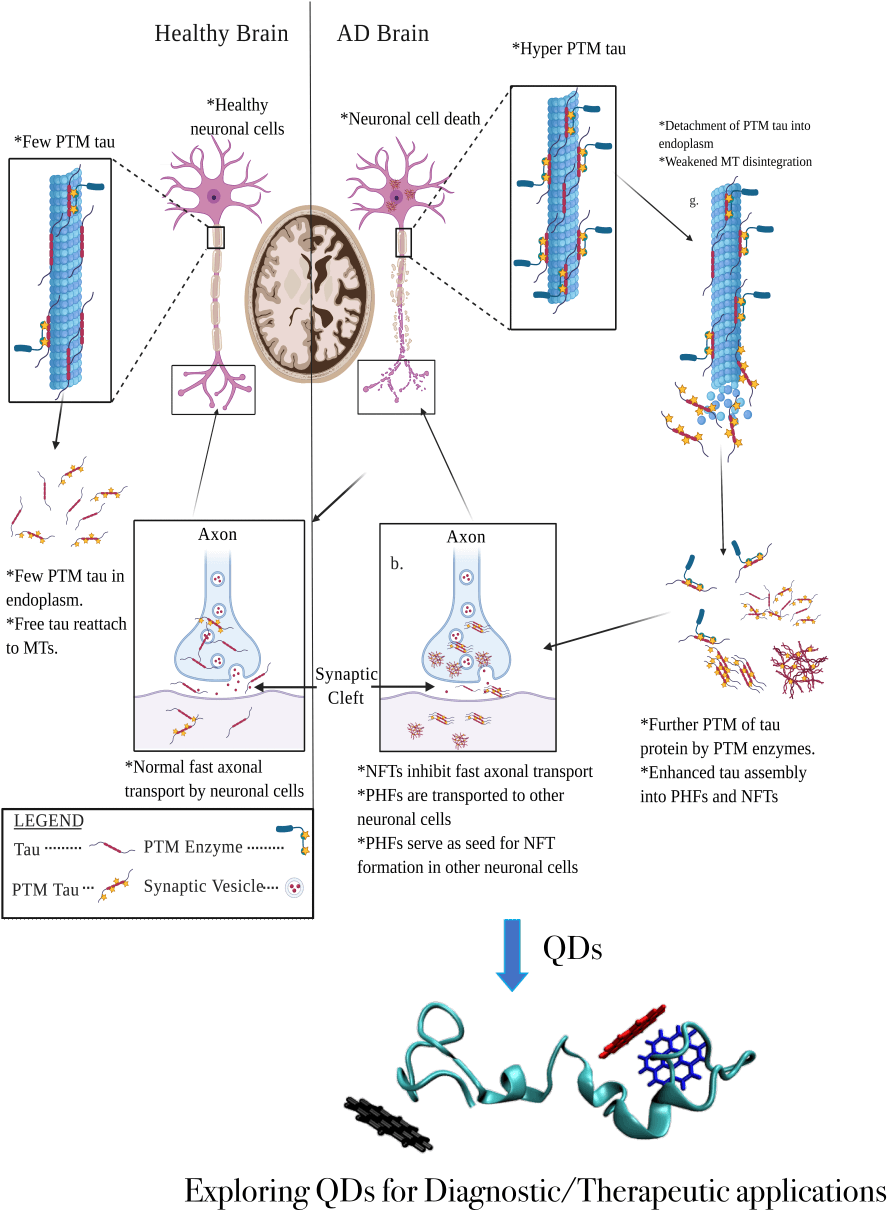Summary
This project develops new sources of light that utilize quantum entanglement to enhance imaging resolution and detection. We aim to go beyond simple photon pairs and advance our understanding and control of new quantum states of light. Our approach uses deterministic single-photon subtraction (removing of a specific photon from a pulse of light) implemented with three-level solid-state quantum emitters, such as quantum dots and colour centers in diamond, coupled to chiral waveguides. In this type of waveguide, light propagation direction is determined by light’s polarization. Our goal is to cascade multiple photon subtraction stages on a chip-scale device and explore deterministic photon subtraction as a tool for engineering quantum states of light for improved resolution of optical microscopy and long range optical sensing.

Figure 1. A three-level quantum emitter with circularly polarized transitions between its ground and excited states is strongly coupled to a chiral waveguide to form a device that can deterministically subtract single photon from input light. This can be used to generate highly non-classical states from, e.g., squeezed coherent states.
Related Content

Identifying the Potential of Quantum Dots to Detect and Disrupt Tau Protein Aggregation in Alzheimer’s Disease
Specific tests for Alzheimer’s disease (AD) diagnosis are currently unavailable, despite AD being the leading cause of dementia. One hallmark of AD progression is the aggregation of tau proteins into paired helical filaments and neurofibrillary tangles, which is accelerated by the hyperphosphorylation of Tau proteins. However, the mechanism by which the hyperphosphorylated tau accelerates protein […]
March 27, 2023

Portable Quantum Dot Measurement System
Summary Detecting heavy metals in water is essential to ensure clean drinking water and appropriate regulatory decisions following an accident (e.g., a spill) or an emergency. Traditionally, high-sensitivity detection of heavy metals requires bulky and costly (to purchase and operate) lab-based instruments. We propose developing a palm-sized, element-specific, highly-sensitive, battery-operated, smartphone-controlled system for on-site measurement […]
July 21, 2022

Rydberg Atom Array Quantum Simulator
Summary Quantum simulators enable probing the static and dynamic properties of correlated quantum many-body systems that would otherwise be numerically inaccessible using classical simulators. We are developing quantum simulators based on arrays of neutral atoms excited to Rydberg states. Such Rydberg atom arrays are advantageous for simulating the dynamics of interacting spin systems (Ising spin […]
February 27, 2020

Hybrid Quantum Materials towards Topological Quantum Computing
Summary Proximity engineered hybrid materials have shown promise for topological quantum information processing. This form of quantum computing provides a stable, error-tolerant approach for building scalable quantum information processors. Topological quantum computing relies on braiding non-Abelian particles, such as Majorana fermions, which do not exist in nature. One can however use materials engineering to […]
December 8, 2018

